One close-up view of the head and shoulders of a bald eagle will leave most people enthralled by his beauty – and maybe even a little fearful of this stern-looking apex predator of the avian world.
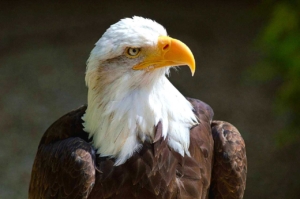 Actually, there’s a perfectly natural reason why a bald eagle looks so fierce. Nature has shaped the skulls of raptors (birds of prey that hunt during the day) not only with a wicked hooked beak for tearing their victims to pieces but also with a protruding forehead bone which shields their eyes like a visor during the hunt. That latter feature imprints their faces with what looks like a perpetual scowl (but I’m sure they’re nice when you get to know them).
Actually, there’s a perfectly natural reason why a bald eagle looks so fierce. Nature has shaped the skulls of raptors (birds of prey that hunt during the day) not only with a wicked hooked beak for tearing their victims to pieces but also with a protruding forehead bone which shields their eyes like a visor during the hunt. That latter feature imprints their faces with what looks like a perpetual scowl (but I’m sure they’re nice when you get to know them).
It’s hard to see the skull protrusion due to the covering of feathers, but the deeply inset eyes give it away. These guys look like they mean business. And if you’re an unsuspecting fish or rodent that gets rudely snatched out of your habitat by the massive talons of this swooping raptor, you’ll find out quickly that they do.
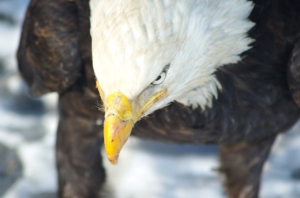 They are mighty; they are swift; they are keen-eyed and immensely powerful. Perhaps that’s why the eagle is one of the most important biblical animals and appears in some of the bible’s most memorable passages. The Bald Eagle is indigenous to North America, but the biblical writers were very familiar with the majesty and power of eagles as a species.
They are mighty; they are swift; they are keen-eyed and immensely powerful. Perhaps that’s why the eagle is one of the most important biblical animals and appears in some of the bible’s most memorable passages. The Bald Eagle is indigenous to North America, but the biblical writers were very familiar with the majesty and power of eagles as a species.
But before we delve into the scripture passages, let’s consider this incredible bird as a marvelous work of nature, which will help us to appreciate its deeper meaning as a potent spiritual symbol.
Soaring Beauty
America’s founding fathers wanted an emblem of freedom, majesty, and power for the national avatar, so they appropriately chose the bald eagle. (Ben Franklin’s proposal of the turkey as the national bird didn’t get quite as many votes, although we have to admit that the turkey is an adequate metaphor for the state of American politics.)
The bald eagle is a soaring beauty, in a very literal sense. Its full-grown wingspan can reach a full eight feet in the biggest birds – wow! – which also allows them to soar on the updrafts of wind to as high as 20,000 feet above the earth. (That’s over 3 ¾ miles!)
Eagles, as a species, are also the only birds that intentionally fly above storm clouds to avoid the rain. Pretty sensible, if you ask me. Adult eagles also have over 7,000 feathers for good insulation in the frigid heights (I’d like to know who counted them all);
And speaking of feathers, eagles have another unique feature that equips them for survival. Their feathers are protected with a special pigment that keeps them from breaking when they slam into ponds, lakes, and rivers to catch fish. Who could have imagined?
But these are not the only aspects of an eagle’s wonder and beauty.
Incredibly Adaptable
Their whole physical mechanism is amazingly adapted for high flight. For example, the oxygen-depleted atmosphere at 2 miles and above would make it hard for most creatures to breathe, but not eagles.
- Their lungs are proportionally much larger than most birds and have the capacity to take in 90% of the reduced supply of oxygen in the rarefied atmosphere;
- It is said that their heart rate also goes into overdrive at higher altitudes in order to pump more oxygen to the wings and extremities;
- Also, in high flight, their huge lungs hyperventilate at seven times the normal breathing rate to get oxygen into the system (again, I wonder who discovered this); and
- All is made possible by an intricate, compact system of blood vessels that deliver the oxygenated blood to every part of the body quickly and efficiently.
Impressed yet? Well, here’s the most fascinating part of their flight capabilities: eagles also have a special type of hemoglobin that, for lack of a better word, “latches onto” oxygen cells effectively at high altitudes. Truly amazing!
A “Visionary”
The eagle’s eyesight is also unbelievable – four to eight times more powerful than that of human beings, but their eyeballs are about the same size (remarkable for a bird whose body is several times smaller than the average adult human). It is said that at 1,000 feet, an eagle can view three square miles of territory looking for prey and can spot a rabbit moving from two miles up.
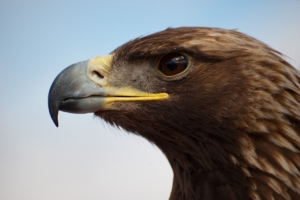 Along with the sight goes an uncanny ability to shift focus. In the hunt, when they lock onto a moving creature below them, their lenses adjust to keep their visual focus as they descend from the heights and pounce on the prey with pinpoint accuracy.
Along with the sight goes an uncanny ability to shift focus. In the hunt, when they lock onto a moving creature below them, their lenses adjust to keep their visual focus as they descend from the heights and pounce on the prey with pinpoint accuracy.
Their average flying speed is between 35 and 40 mph, but they can dive at close to 100 mph to catch their prey in a blitzkrieg attack.
And would you believe that eagles have three eyelids?! The eyelids act as kind of a sophisticated lens cap to protect the camera-like eyes:
Number 1 blinks upward from the bottom;
Number 2 blinks downward from the top; and
Number 3 is a sort of film covering on the eyeball that moves laterally like a windshield wiper. It produces an enzyme that keeps the eyes moist and protects them from the potentially harmful effects of wind, salt water, and bacterial infections.
As I said, amazing! Our English term “eagle-eyed” describes a clear-sighted person, but even the sharpest-seeing human being is no match for the mighty eagle.
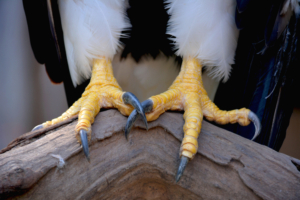 A Dominant Spiritual Symbol
A Dominant Spiritual Symbol
Now, as to the scriptures, the eagle is one of the most vivid images that both Old and New Testament writers use to communicate truth about God and His Kingdom. Here is just a sampling of the numerous references to eagles in the Bible:
God’s warning and judgment
Deuteronomy 28:49-50
“The LORD will raise up against you a nation from afar, from the end of the earth, that swoops down like an eagle, a nation whose language you do not understand, a nation of fierce appearance….”
Hosea 8:1
“Put the trumpet to your lips! One like an eagle is over the house of the LORD! Because they have violated my covenant, and rebelled against my law.”
Revelation 8:13
“Then I looked again and heard an eagle flying high overhead cry out in a loud voice, ‘Woe! Woe! Woe to the inhabitants of the earth from the rest of the trumpet blasts that the three angels are about to blow!’”
His tender care and protection
Deuteronomy 32:10-11
“He shielded them, cared for them, guarded them as the apple of his eye. As an eagle incites its nestlings, hovering over its young, so he spread his wings, took them, bore them upon his pinions.”
Isaiah 40:31
“They that hope in the LORD will renew their strength, they will soar on eagles’ wings; they will run and not grow weary, walk and not grow faint.”
Revelation 12:14
“But the woman was given the two wings of the great eagle, so that she could fly to her place in the desert, where, far from the serpent, she was taken care of for a year, two years, and a half-year.”
You will notice that the passages focus on the bird’s main attributes: its power as a predator and also its sublime majesty, which the biblical writers have transformed into a potent symbol of God’s tender love for His people.
Here are several other passages about eagles in the Bible if you’re interested in looking them up.
In the Prophets: Jeremiah 48:40-41, 49:16 and 22; Ezekiel 17:3-8; Hosea 8:1.
In the Law and Writings: Exodus 19:4; 2 Samuel 1:23; Proverbs 23:5; Job 39:27-29; Psalm 103:2-5.
Principle Eagle Reference
Chief among all the eagle scriptures, however, is the passage from Ezekiel in which he describes his vision of the fearsome angels called Cherubim. In Ezekiel’s vision, the Cherubim actually have the face of an eagle!
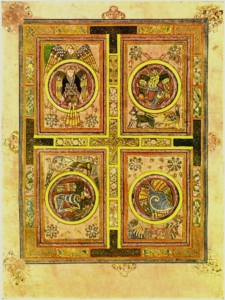
A page from the Book of Kells (Folio 129v4, Public Domain)
The whole first chapter of Ezekiel is a pretty awesome depiction of one of the most powerful angels in God’s army, particularly verses 9-10.
“Their faces and their wings looked out on all their four sides; they did not turn when they moved, but each went straight ahead. Their faces were like this: each of the four had a human face, and on the right the face of a lion, and on the left, the face of an ox, and each had the face of an eagle.”
Half a millennium after Ezekiel wrote about his vision, St. John, author of the Book of Revelation, also had a heavenly vision and used very similar animal imagery to describe the awe-inspiring “living creatures” that worship around God’s throne in:
“The first creature resembled a lion, the second was like a calf, the third had a face like that of a human being, and the fourth looked like an eagle in flight” (Rev 4:7).
So, the evidence is clear: from Exodus to Revelation, the beautiful and mighty eagle hovers over and swoops down regularly into the pages of the Bible!
What the Tradition Says
It doesn’t surprise us, then, that the Christian Tradition very early on assigned these prophetic “faces” of Ezekiel and Revelation to the four Evangelists (writers of the 4 Gospels). I’m chiefly interested in the eagle, of course, but in the Tradition, like the scriptures, the four come as sort of a boxed set:
- St. Matthew has the face of a MAN because his gospel focuses on the human genealogy of the Messiah.
- St. Mark’s symbol is the LION because the king of beasts emphasizes the power, dignity, and majesty of Christ our King.
- St. Luke’s BULL (calf or ox) symbolizes the sacrificial nature of Christ’s offering of Himself on the Cross for our sins. And, finally,
- St. John’s symbol is the EAGLE emphasizing that St. John’s writing soars above the rest in theological insight, splendor, and glory.
St. Matthew
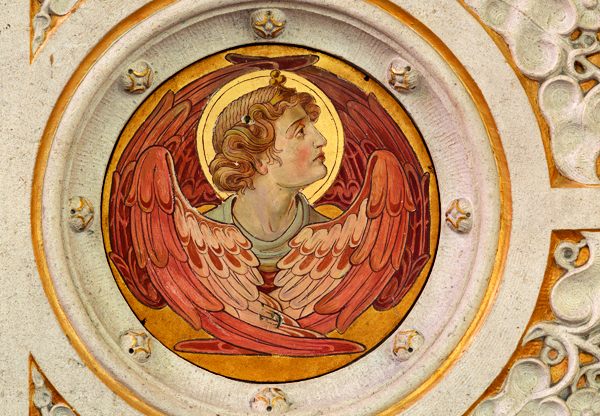
St. Mark
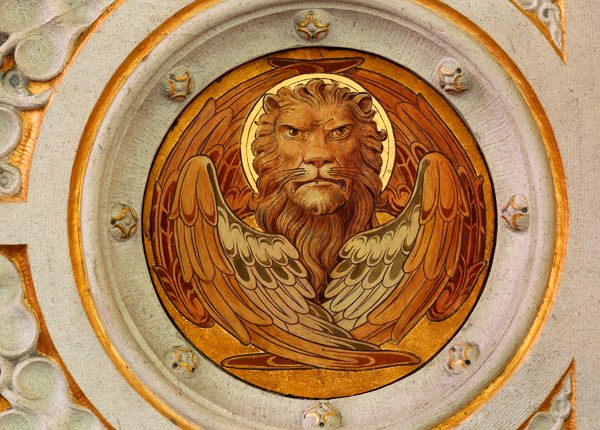
St. Luke
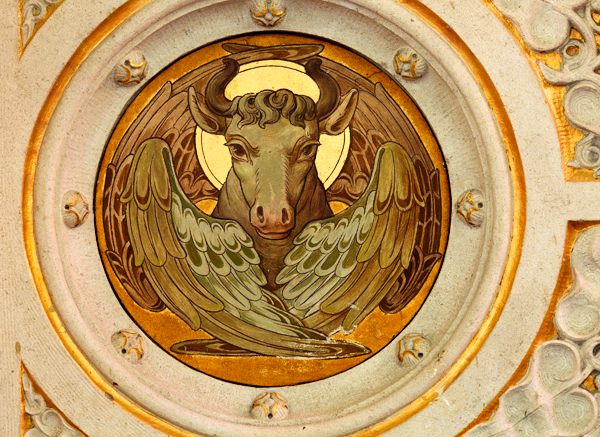
St. John
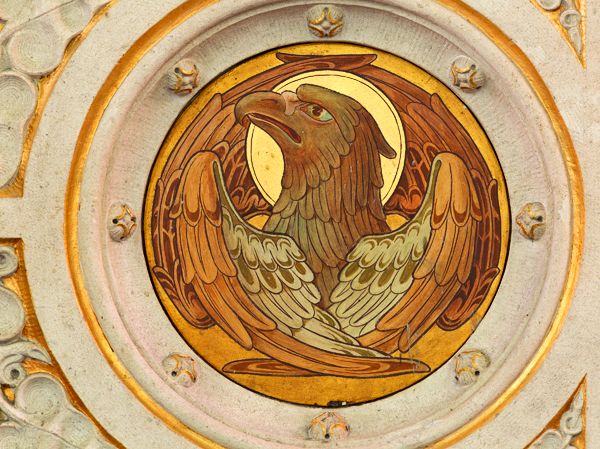
Whole books and treatises have been written about these images, not to mention mountains of wonderful artistic depictions. I hope to do a future newsletter or article on these symbols alone.
But in the meantime, I will leave you with the one bit of eagle artistry that has always been very inspiring to me: John Denver’s magnificent song, released in 1971, “The Eagle and the Hawk.”
If you’re like me, you’ll be entranced by the music and you’ll also love the first video’s slow motion clips of bald eagles swooping down to snatch fish out of the water. This amazing bird is undoubtedly a sacred window of inspiration for all who have eyes to see!
John Denver’s Tribute to The Eagle and the Hawk
Watch the Music Video (2:23)
Watch the 1984 Live Performance (2:05)
Photo Credits – Feature Image: 123RF.com; Bald Eagle 1: Lewis Hulbert, CC BY-SA 4.0, via Wikimedia Commons; Eagle Face: CanyonlandsNPS, Public domain, via Wikimedia Commons; Bald Eagles in Flight (1, 2, 3); Talons: iStock.com; Bald Eagle 2: Carl Chapman from Phoenix, usa, CC BY 2.0, via Wikimedia Commons; Four Evangelists (Mt, Mk, Lk, Jn): PMRMaeyaert, CC BY-SA 4.0, via Wikimedia Commons; Icon: Ricardo André Frantz (User:Tetraktys), CC BY-SA 3.0, via Wikimedia Commons.
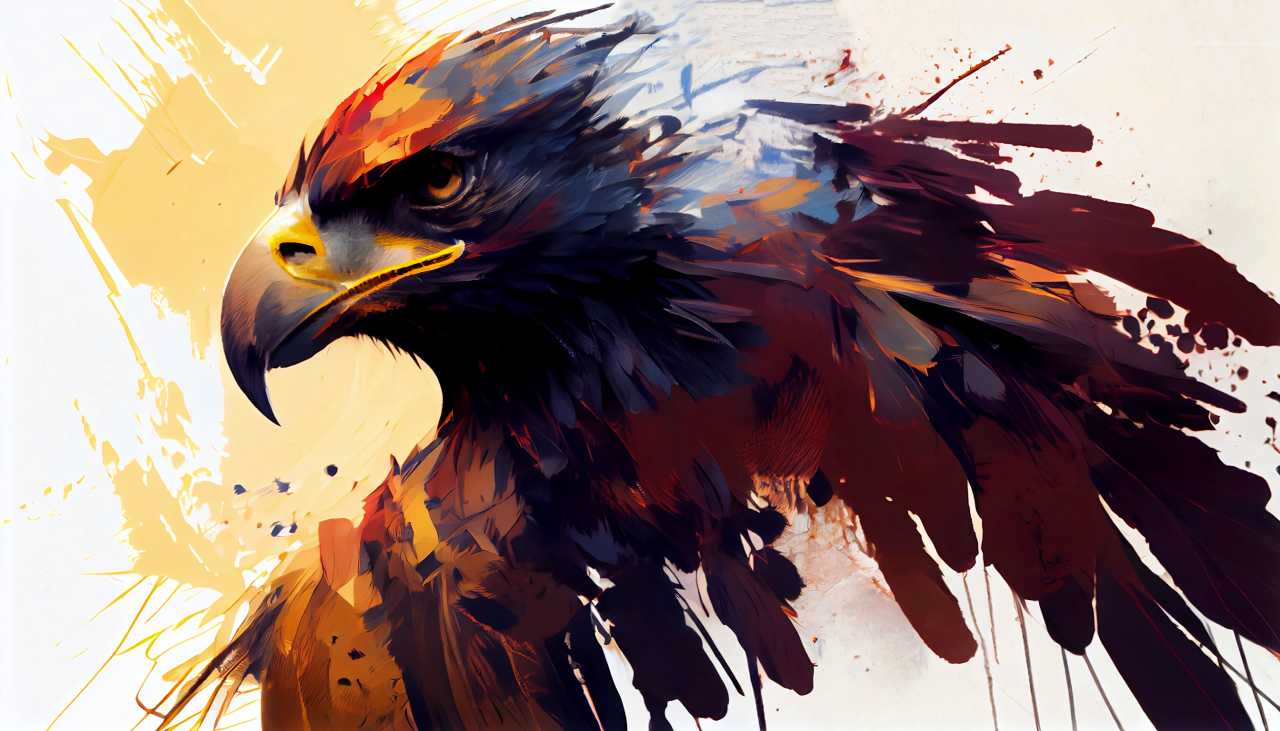
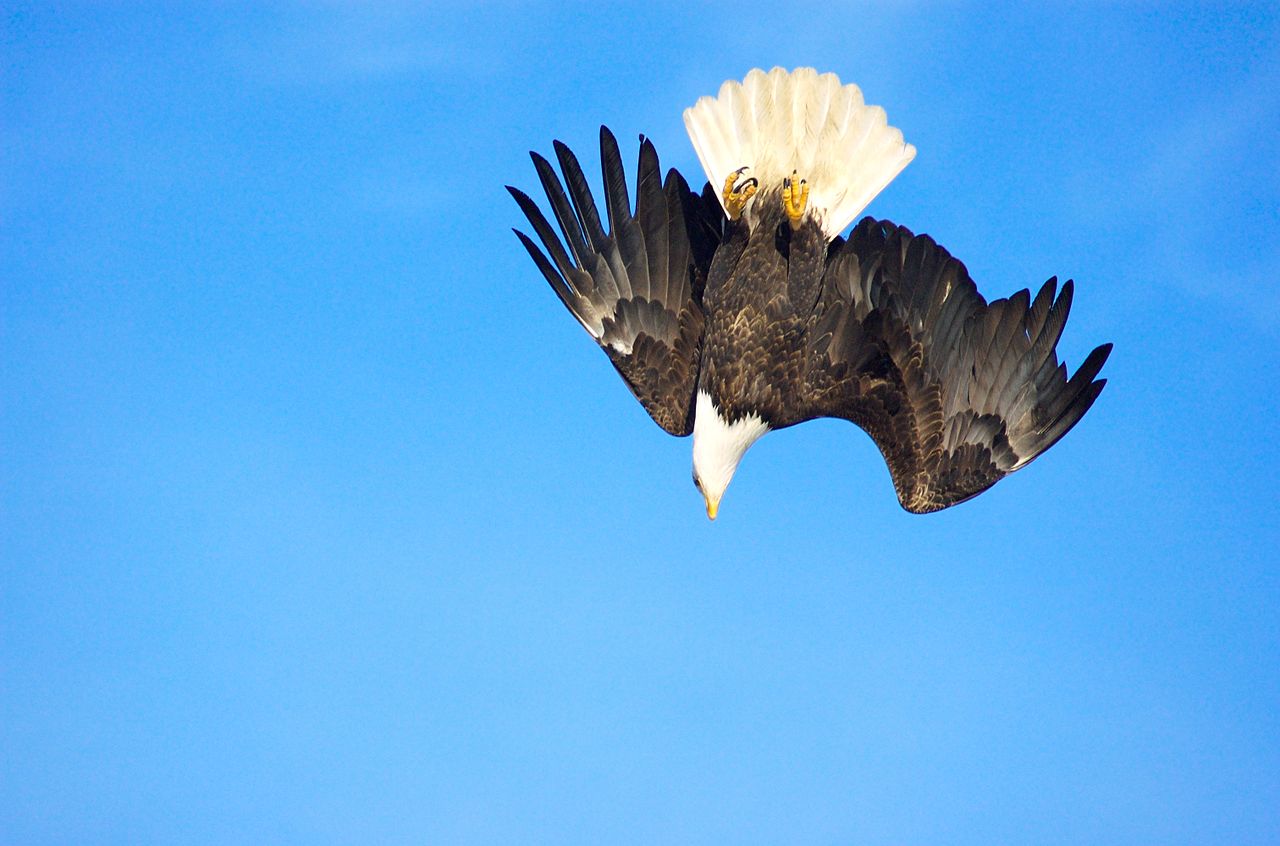
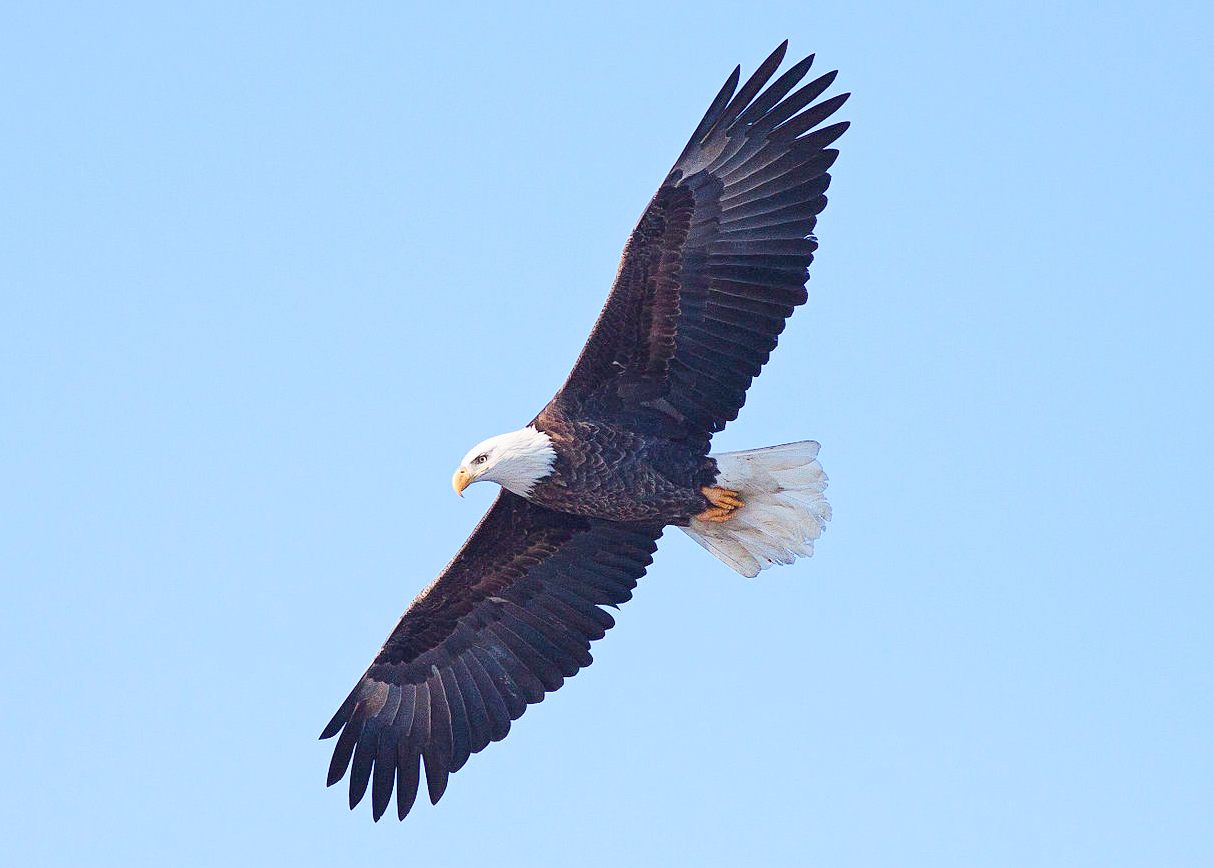
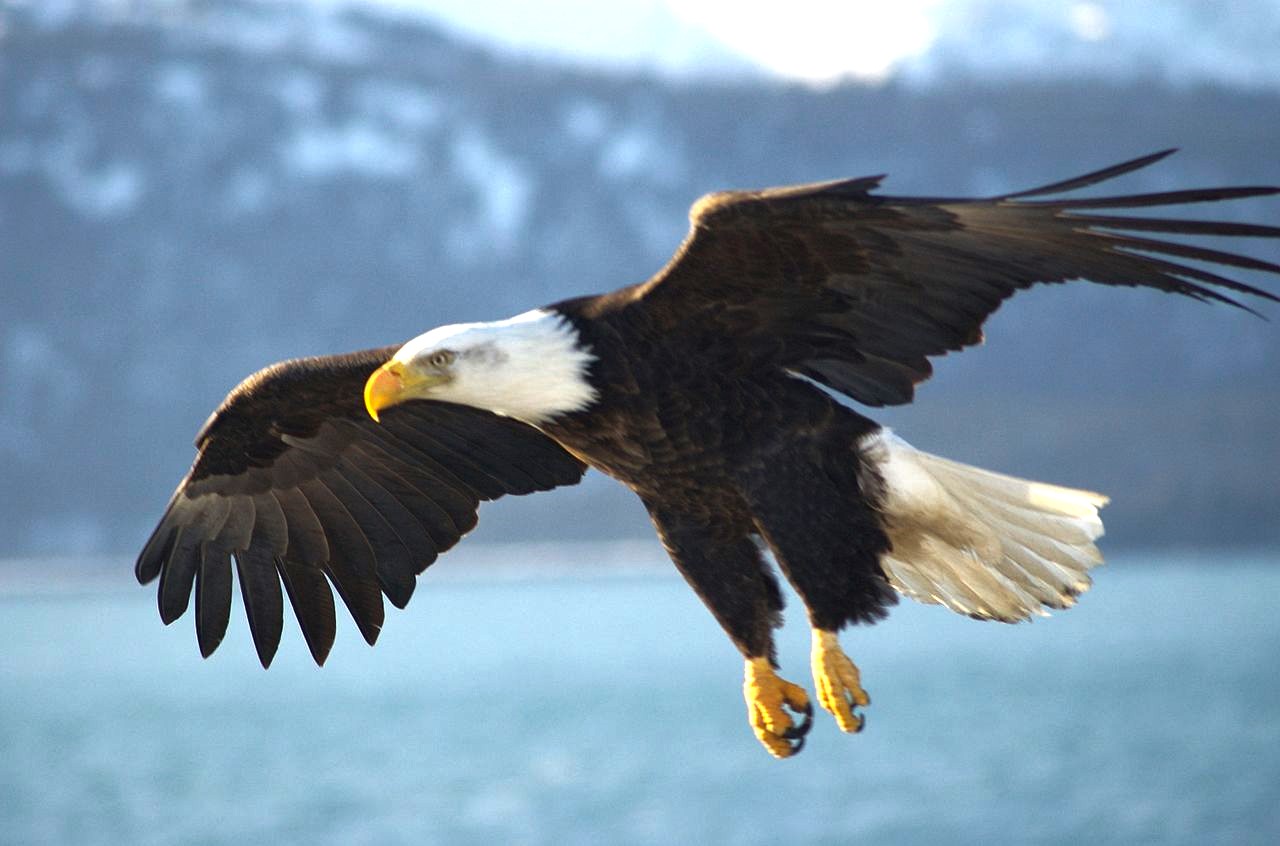


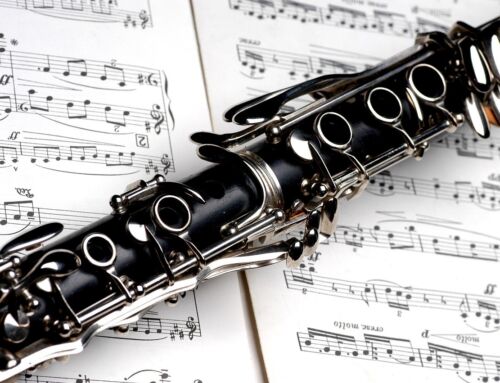
[…] © Sacred Windows […]